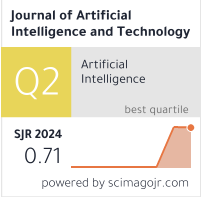Implementing Machine Learning-based Autonomic Cyber Defense for IoT-enabled Healthcare Devices
DOI:
https://doi.org/10.37965/jait.2023.0209Keywords:
cyber defense, healthcare devices, Internet of Things (IoT), machine learningAbstract
Smart homes present a serious challenge for the aged and those with mobility issues due to the environment’s inherent danger. Unwary people have the propensity to fall over when bending over in these settings. Here, they show two time-based reasoning models to identify incidents of potentially fatal falls that have not been accounted for (CM-I and CM-II). The ubiquitous use of IoT altimeter watches among the elderly provides a wealth of data that can be used by these algorithms to predict the likelihood of a fall based on categorization criteria. They compared actual and simulated data involving missteps, mishaps, and crashes to gauge the programmers’ performance. Results suggest that using such logic models to help healthcare providers determine if senior people living in smart homes have fallen is a potential field for future study. The CM-II model had the highest prediction accuracy of any model identified in the literature, at 0.98 when compared to the test parameter. Since the number of devices linked to the IoT can be quickly extended in contrast to the number of devices connected to conventional computers, the number of hacks aimed at the IoT has grown dramatically. There is no way to fix the issue that hacked IoT devices create until they figure out how to track down the source of the attacks. Pursuing a deeper understanding of the technologies, protocols, and architecture of IoT systems, as well as the potential consequences of using infected IoT devices, is the overarching goal of this study. There are many Internet of Things (IoT) systems vulnerable to cybercriminal manipulation, so this study also explores a range of machine learning and deep learning-based methods that can be used to detect such compromise.
Metrics
Published
How to Cite
Issue
Section
License
Copyright (c) 2023 Authors

This work is licensed under a Creative Commons Attribution 4.0 International License.





